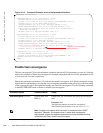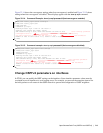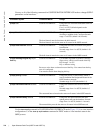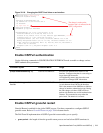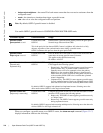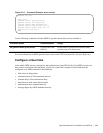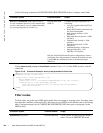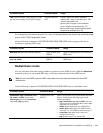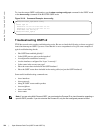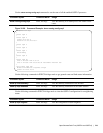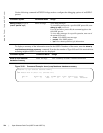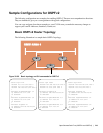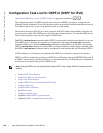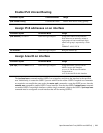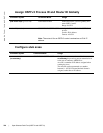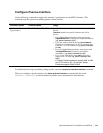
722 | Open Shortest Path First (OSPFv2 and OSPFv3)
www.dell.com | support.dell.com
To view the current OSPF configuration, use the show running-config ospf command in the EXEC mode
or the
show config command in the ROUTER OSPF mode
Figure 32-19. Command Example: show config
Troubleshooting OSPFv2
FTOS has several tools to make troubleshooting easier. Be sure to check the following, as these are typical
issues that interrupt an OSPFv2 process. Note that this is not a comprehensive list, just some examples of
typical troubleshooting checks.
• Has OSPF been enabled globally?
• Is the OSPF process active on the interface?
• Are adjacencies established correctly?
• Are the interfaces configured for Layer 3 correctly?
• Is the router in the correct area type?
• Have the routes been included in the OSPF database?
• Have the OSPF routes been included in the routing table (not just the OSPF database)?
Some useful troubleshooting commands are:
• show interfaces
• show protocols
• debug IP OSPF events and/or packets
• show neighbors
• show virtual links
• show routes
Note: If you are using Multi-Process OSPF, you must enter the Process ID to view information regarding a
specific OSPF process. If you do not enter the Process ID, only the first configured process is listed.
FTOS(conf-router_ospf)#show config
!
router ospf 34
network 10.1.2.32 0.0.0.255 area 2.2.2.2
network 10.1.3.24 0.0.0.255 area 3.3.3.3
distribute-list dilling in
FTOS(conf-router_ospf)#



